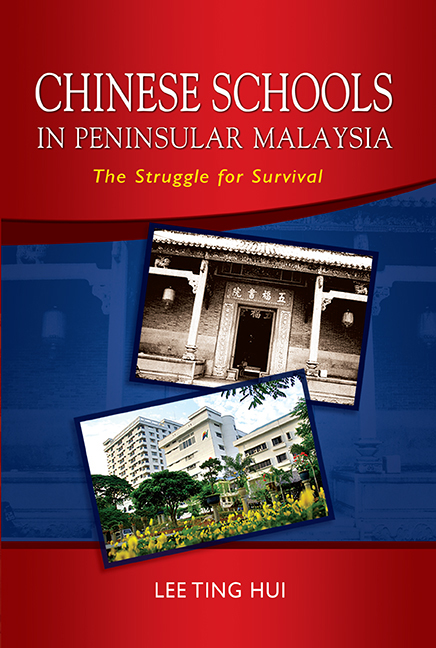Book contents
- Frontmatter
- Contents
- Acknowledgements
- Abbreviations
- Notes on Coverage and Names
- Introduction
- 1 The Years before the Pacific War
- 2 From the Japanese Occupation to Self-Government
- 3 Towards the “Ultimate Objective” of One-medium Education
- 4 One-medium Education under Rukun Negara and the New Economic Policy
- 5 The 1980s: A Decade of Continuing Challenges for the Chinese Schools
- 6 Vision 2020 and the Chinese Schools
- 7 Conclusion: Challenges and Responses
- Glossary
- Bibliography
- Index
- About the Author
2 - From the Japanese Occupation to Self-Government
Published online by Cambridge University Press: 21 October 2015
- Frontmatter
- Contents
- Acknowledgements
- Abbreviations
- Notes on Coverage and Names
- Introduction
- 1 The Years before the Pacific War
- 2 From the Japanese Occupation to Self-Government
- 3 Towards the “Ultimate Objective” of One-medium Education
- 4 One-medium Education under Rukun Negara and the New Economic Policy
- 5 The 1980s: A Decade of Continuing Challenges for the Chinese Schools
- 6 Vision 2020 and the Chinese Schools
- 7 Conclusion: Challenges and Responses
- Glossary
- Bibliography
- Index
- About the Author
Summary
The Japanese took over the Malay Peninsula from the British between the end of 1941 and the beginning of 1942. Thereafter, they ruled the land until 1945 when they lost the Pacific War and had to return it to the British. While there, as to be expected, they tried to promote education through their own language at the expense of all other languages.
Before the war, the British had ruled the Straits Settlements directly, and the Federated as well as the Unfederated Malay States indirectly, through their sultans. On recovering the peninsula, they tried immediately to alter this system. They made an attempt to do away with the sultans, join their states into one unit with Penang and Malacca, and rule the whole country directly. As before, they continued to govern Singapore separately. They also treated the immigrant races, the Chinese and Indians, on par with the Malays and granted them citizenship on easy terms. All these would promote the development of a Malayan nation. However, the scheme ran into very strong opposition from both the conservative and radical Malays. Later, the British also came up against a rebellion led by the Chinese communists who aimed to take total power from them. From then on, they made compromises to the conservative Malays step by step. First, while amalgamating the Federated and Unfederated Malay States, together with Penang and Malacca, into one unit, they reverted to the traditional practice of ruling the new set-up indirectly. Not so long after that, they conceded to them self-government.
Along with all the changes in the power configuration of the country came changes in the field of education. The British at first tried to make their language the premier medium of instruction in schools, while giving the Chinese, Malay, and Tamil languages equal status. In this, they met with vigorous protest from the conservative Malays.
- Type
- Chapter
- Information
- Chinese Schools in Peninsular MalaysiaThe Struggle for Survival, pp. 43 - 82Publisher: ISEAS–Yusof Ishak InstitutePrint publication year: 2011



